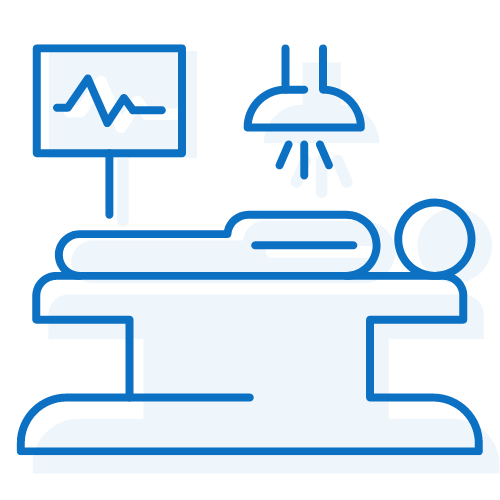Liposuction – Causes, Symptoms, Treatment and Prevention
Overview of Liposuction
Liposuction is a surgical procedure that removes fat from the body. It is most commonly used to remove excess fat from the abdomen, thighs, and arms. Liposuction can also be used to improve the contour of the neck, jowls, and chin.
Liposuction is usually performed using a local anesthetic, which numbs the area to be treated. The doctor will make small incisions in the skin and insert a thin tube called a cannula. The cannula is used to break up the fat cells and suction them out of the body.
Liposuction is considered a safe procedure, but like any surgery, there are some risks involved. These include bleeding, infection, and nerve damage. Liposuction should only be performed by a qualified plastic surgeon.
Free Consultation
Get Liposuction treatment cost estimate
Am I a Good Candidate for Liposuction?
Liposuction is not for everyone. The ideal candidate for liposuction is a man or woman who is in good physical shape but has localized areas of fat that resist diet and exercise. Candidates should also have realistic expectations about the results of surgery.
Liposuction is most often used to improve the appearance of the thighs, buttocks, abdomen, and hips. It can also be used to slim the face, neck, and arms. Liposuction is not a treatment for obesity or a substitute for proper diet and exercise.
If you are considering liposuction, you should consult with a board-certified plastic surgeon to discuss your goals and concerns. The surgeon will perform a physical examination and evaluate your overall health to determine if you are a good candidate for surgery.
Types of Liposuction
Suction-assisted liposuction (SAL):
SAL uses a cannula to suck the excess fat out of the body. The surgeon makes a small incision to insert the cannula and then the excess fat is sucked out of the body.
Tumescent liposuction:
Tumescent liposuction is similar to SAL, but the surgeon injects a solution into the fatty tissue before suctioning it out. This solution helps to break down the fat cells and makes them easier to remove.
Laser-assisted liposuction (LAL):
Liposuction that uses a laser to break down the fat cells before they are suctioned out of the body. LAL is often used on areas of the body that are difficult to treat with SAL.
Water-assisted liposuction (WAL)
A newer type of liposuction that uses water to remove the fat cells. WAL is often used on areas of the body that have a lot of loose skin, such as the thighs and stomach.
Risks of Liposuction
Liposuction is a surgical procedure with several potential complications, including bleeding and an adverse reaction to anesthesia. The following are some of the most common liposuction-specific complications:
- Contour irregularities: Because of uneven fat removal, poor skin elasticity, and unusual healing, your skin may appear bumpy, wavy, or withered. The thin tube (cannula) that’s used during liposuction can cause damage beneath the skin that results in a persistent splotched appearance.
- Fluid accumulation: Fluid (seromas) may collect in pockets temporarily under the skin. This fluid might need to be drained with a needle and treated with medicine.
- Numbness: Nerve damage can cause numbness, tingling, or a burning sensation in the afflicted region. Temporary nerve injury is conceivable as well.
- Infection. It’s possible to acquire a skin infection, albeit uncommon. A serious skin infection may be life-threatening.
- Internal puncture. A cannula that penetrates too deeply rarely causes an internal organ to be punctured. This might necessitate emergency surgical treatment.
- Fat embolism. Pieces of detaching fat may lodge in a blood vessel and collect in the lungs, or they can travel to the brain.
- Kidney and heart problems. Shifts in fluids levels as liquids are pumped and drawn out may cause serious kidney, heart, and lung problems.
- Lidocaine toxicity. Lidocaine is used to alleviate discomfort after liposuction by being administered with fluids injected into the fat. Although it is typically safe, lidocaine toxicity can happen rarely, causing major heart and central nervous system issues.
Why do you need Liposuction?
Liposuction is occasionally used to treat a variety of problems, including conditions that are not strictly cosmetic in nature.These include:
- Lymphedema: Liposuction is utilized to remove extra fat. Lipedema occurs when there is an excessive amount of lymph in tissues, causing edema (swelling). Edema commonly affects the arms or legs. To alleviate swelling, discomfort, and pain, liposuction may be used on rare occasions.
- Gynecomastia: Occasionally, fat develops beneath a guy’s breasts. It can be embarrassing and cause emotional distress. Liposuction may be used to remove this extra fat.
- Lipodystrophy syndrome: Fat accumulates in one area of the body and is lost in another. Liposuction may improve a patient’s appearance by correcting an unnatural body fat distribution.
- Extreme weight loss after obesity: Excess skin and other abnormalities may require treatment for a person with morbid obesity who loses at least 40% of their body weight.
- Lipomas: Benign fatty tumors are the ones that cause these growths.
Our clinics are accessible from these cities

3000+
Happy Patients

1000+
Surgeries

10+
Doctors

Clinics Across India

Multi-
City

3+
Hospitals
Our Clinical Footprint
We provide easy storage and access to information from Mantra Care technology. Here, patients can easily acquire notes from virtual doctor consultation, treatment plans, prescriptions, and more from one place. Get medical information 24/7 from any digital device.
Mantra Care aims at creating a much more efficient experience for the patients through their cost-effective and quality-driven medical treatments.
We provide relatively lower cost treatments for almost every health problem making our company the best choice for patients. Mantra Care technology automates all the manual tasks for members and doctors, making it a viable choice for acquiring lower-cost treatments.